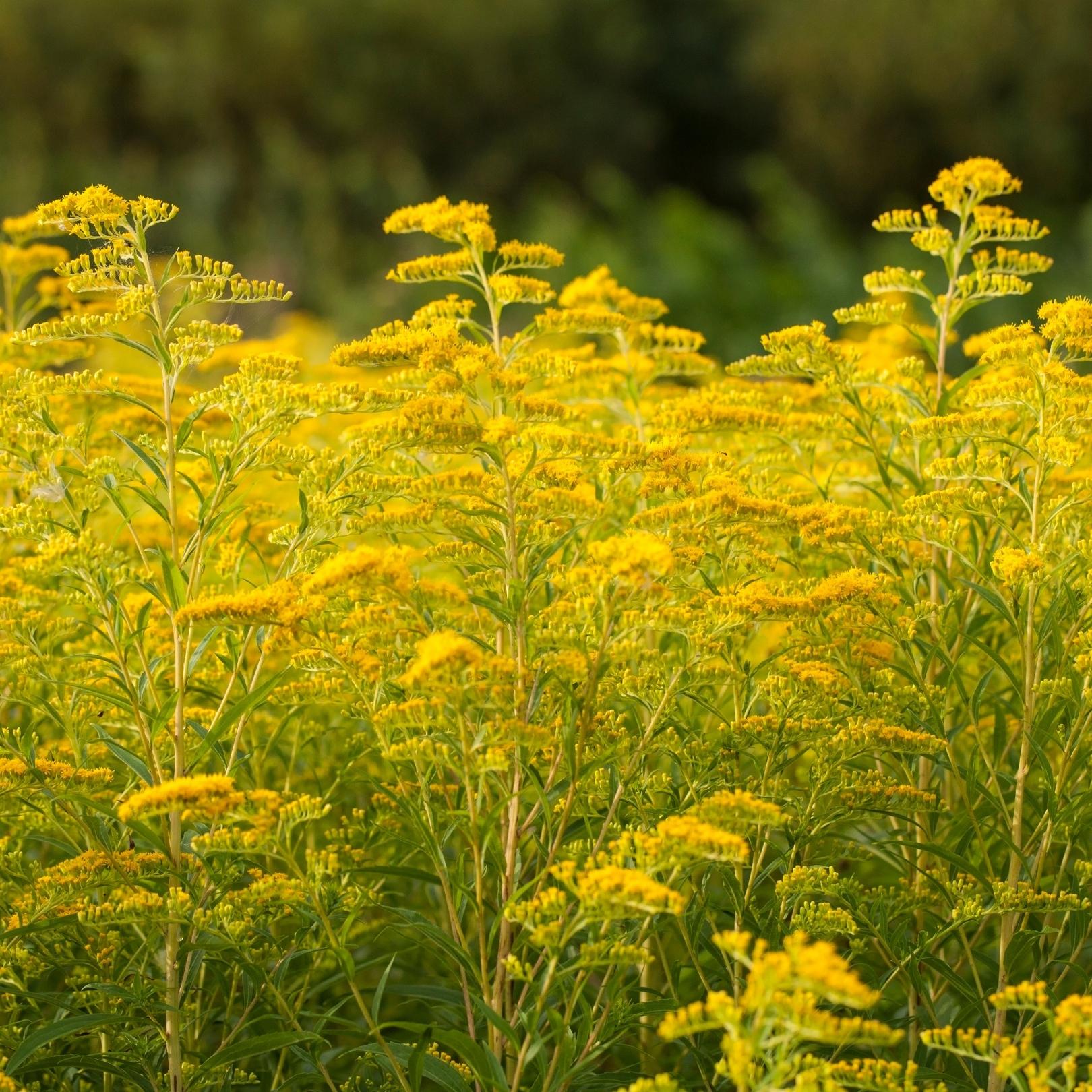Blog
Bumps and Bunches: Goldenrod Galls

By Judy Mouch
One of summer’s final colorful swan songs comes from fields of goldenrods (Solidago spp.). Hay fever sufferers, have no fear! Contrary to popular opinion, goldenrods will not stir up your allergies. Rather, they provide a late summer feeding frenzy for bees and other pollinators.
Look beyond the beautiful blossoms to see evidence of goldenrod invaders, including the gall fly, the goldenrod gall moth, and the goldenrod gall midge.
In late spring, the goldenrod gall fly deposits her egg on the stem of the young goldenrod plant. After about 10 days, the egg hatches, and the larva bores into the stem, inducing the goldenrod into forming a round lump, or ball gall. Inside the gall, the larva has shelter and nourishment throughout the summer. As fall and winter approach, the cooler temperatures cause the larva to slow its metabolism, and produce a chemical “antifreeze,” allowing it to survive a harsh winter. In the spring, the larva emerges from the gall, forms a pupa, and in a few weeks, metamorphosizes into an adult fly.
Sometimes the larva’s safety is compromised. A parasitic wasp can lay its eggs in the gall chamber, where the wasp larvae chow down upon the juicy gall fly larva. Downy woodpeckers also find the gall fly larva to be quite a delicacy. Often you can find holes where the Downy has pecked its way in to access the hidden munchie. Gall fly larvae can even meet their demise because of human intervention. Ice fishers often collect ball galls, cut them open, and use the larvae as fish bait.
Other galls appear to be like ball galls, but rather than having a spherical shape, they have an elliptical or spindle shape. Elliptical galls result from the goldenrod gall moth, who lays her egg on one of the goldenrod’s lower leaves in the fall. The larva spends the winter on the leaf and moves to a newly emerged goldenrod in the spring, where it penetrates the stem, resulting in the formation of an elliptical gall. The larva then forms an escape hatch, retreats into the gall, and continues its development. It emerges in the fall, through its escape hatch, as an adult moth. The cavity left behind often serves as a winter home for tiny spiders and other insects.
Perhaps the easiest to spot, a third type of goldenrod gall has a completely different appearance than the ball and elliptical galls. Bunch or rosette galls appear as flower-like clusters of leaves at the tip of a goldenrod stem. The female gall midge lays her eggs on the top bud of the goldenrod stem in the spring, stimulating the plant to produce an abnormal cluster of leaves. This abnormal cluster of leaves provides protection and shelter for the developing midge as well as other small insects.
So next time you spot a field or patch of goldenrods, see if you can find each type of gall!